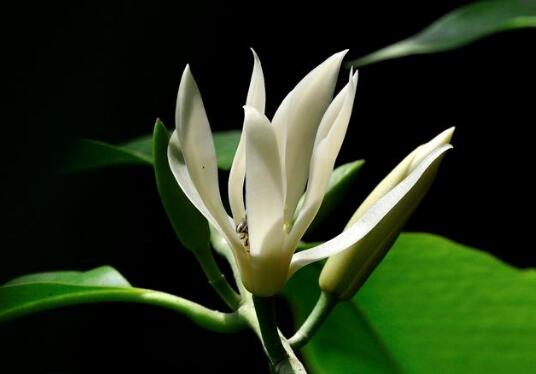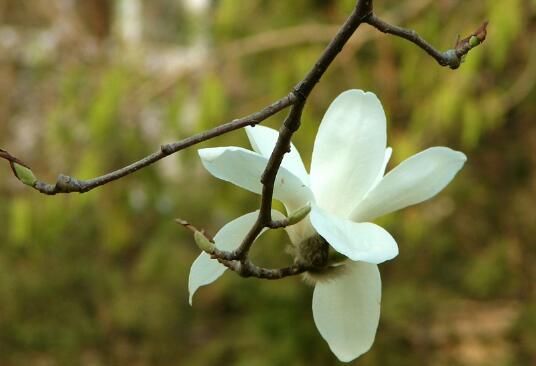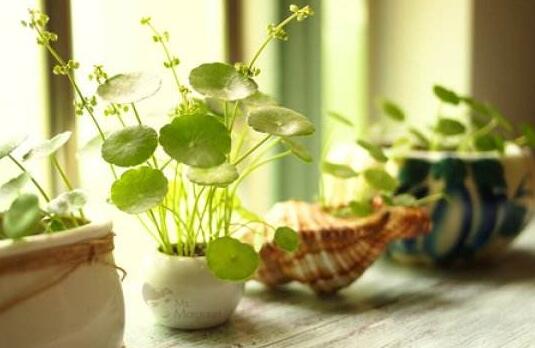Can white orchids be cut? the cutting methods / strong branches of white orchids can improve the survival rate.
Cutting propagation is a way of plant reproduction. The answer to the question is yes, but if you want to be successful, you must master the correct operation method. So what is the cuttage survival rate of white orchid? Next, the editor will take you to learn about it.
Can white orchids be cut? yes.

2. Cutting methods of white orchids.
1. Cutting time
When we are preparing for cuttage propagation of white orchids, it is very important to choose a right period of time, generally speaking, it is best to choose in spring and autumn, because the climate of these two seasons is more suitable for its growth, and the success rate of cutting will be greatly improved, so we should keep this in mind.
two。 Soil selection
In the cutting process of white orchid, first of all, we need to choose soil, which is the first step, and it is also a step to lay a good foundation. We had better choose humus soil with high looseness, because this kind of soil has good drainage and air permeability, which can make white orchid better absorb nutrients and speed up its rooting.
3. Soil disinfection
After we have selected the soil, we need to disinfect the soil first so as not to infect the white orchid with diseases and insect pests. There are two methods of disinfection: one is to break it up and lay it out in the hot sun for exposure and disinfection; the other is to put it into a pot for stir-frying and disinfection, which can well eliminate diseases and insect pests.
4. Cuttings selection
In the cuttage process of white orchid, the selection of cuttings is also a very important step. We had better choose branches that are relatively robust and disease-free, so that the survival rate will be very high. If we choose branches that look very small and delicate, then we can basically declare that the cutting has failed, and the survival rate will not be very high.
5. Cutting method
When it comes to the cutting method of white orchid, it is actually very simple. First of all, we should apply an appropriate amount of basic fertilizer in the soil. After applying the fertilizer, we will cut a hole in the soil with chopsticks, and then cut off the leaves at the bottom of the cuttings and insert them into the soil. Generally, we can insert 2/3 to water, watering carefully and remember not to accumulate water. After 30 days or so, we can take root.
6. Subsequent management
After the cuttings take root, we can declare that the cuttings are successful, and then we can carry out follow-up conservation, and there are also many points that need to be paid attention to in maintenance, such as watering, fertilization and so on. If you don't know how to raise them, you can refer to the article on the breeding methods of white orchids, which has detailed teaching.
Conclusion: in the propagation methods of white orchids, cutting propagation is a method with a high survival rate, as long as we follow the above methods of cutting, generally will be successful. This is the end of the introduction on the cutting methods of white orchids. I hope I can bring you some help.
How to propagate white orchids? the propagation method / striping grafting of white orchids is more common.
White orchid is a kind of highly ornamental flower plant, which can be seen in many gardens in our country. With more and more people raising it, people are more concerned about its reproduction, so how do white orchids reproduce? What are the breeding methods of white orchids? Next, the editor will take you to learn about it.
First, how to reproduce white orchids
2. Propagation methods of white orchids
Striping propagation
1. Ordinary strip pressing
In the propagation method of white orchid, striping propagation is one of the more commonly used. This propagation method is generally best carried out in February-March. We need to cut the selected branch half the depth at the base, and then cut a section upward. We stuck a tile in the middle, then pressed it into the soil, fixed it with wire, and then waited for it to take root and separate the branch.
two。 High branch pressing
Generally speaking, it is best for us to choose strong branches, cut cracks in the lower part of the white orchid, then trap it with a bamboo tube, load it with culture soil, and then fasten it with a rope. during this period, we need to spray water frequently, but the amount of water is not too much. just keep a certain amount of humidity, so that new roots will only grow in May of the next year, and then we can take them off and plant them.
Grafting propagation
1. Leaning connection method
The breeding method of this kind of white orchid is generally best carried out during the period from April to July, and the specific off-ground 70cm is the best. after we are tied up, we have to wrap it in the soil, and then hold it outside with leaves, so that we can prevent Rain Water from scouring, and then we can cut it off and breed it separately in about 60 days.
two。 Splicing method
In the cutting method, it is best to choose around September. We need to choose the scion that grows stronger white orchids, then tie the section of the rootstock and scion together and tie them with thin film strips, then bury them with soil. Then water regularly, wait until the next spring to remove the covered items, wait until sprouting, leaving only 4-5 buds, the rest can be trimmed off.
Sowing and reproduction
When we sow and reproduce, it is best to choose the time point from September to October. As for the breeding method of this white orchid, it is also relatively simple. When sowing, we need to sow the seeds and fine sand, and then cover them with 1-2cm soil to water them. When watering, we should pay attention to watering thoroughly once, and then the seedlings can emerge in about 20 days.
Cuttage propagation
We should first choose cuttings before cutting propagation, generally it is best to choose cuttings with stronger growth, so the survival rate will be higher. When cutting, we can use chopsticks to cut a hole in the soil, and then insert the cuttings and water them. After watering, about 30 days after watering, the cuttings can take root.
Conclusion: after reading the above, I believe you also have a certain understanding of how to breed white orchids. After successful reproduction, we can carry out follow-up maintenance of them. If you do not know how to raise them, you can refer to the culture methods of white orchids, which has a detailed introduction. This is the editor's introduction to the breeding methods of white orchids. I hope I can bring you some help.
Application of full Light spray cutting Seedling technique in different varieties of Flowers
The application of full-light spray cutting technology in flowers is the key issue we want to talk about today, not only talking about herbaceous flowers, but also woody flowers. What are the benefits of full-light spray cutting to flowers? let's learn together.
1 Overview of full light spray cutting seedling raising technique
The technology of full-light spray cutting is different from the traditional technology of cutting propagation, which takes cuttings with leaves and carries out intermittent spraying through automatic spraying device to increase the relative humidity on the bed surface of cuttings and keep a layer of water film on the leaf surface all the time. through the evaporation and heat absorption of the water film, the leaf temperature is reduced to ensure the smooth progress of plant photosynthesis, and the assimilation is uninterrupted. This makes the cuttings do not lose water before rooting, thus improving the possibility of rooting of cuttings, which can be said to be a method of cutting seedlings on a full-light cutting bed. The technology of full light spray softwood cutting can not only greatly reduce the cost of raising seedlings, but also has the characteristics of easy harvesting, quick rooting after cutting, abundant sources of spikes, large amount of roots, short seedling raising cycle and large seedling yield. As a result, this technology has been widely used in the cutting propagation of flower seedlings. Especially for the excellent flower varieties with high value and difficult to take root, using the traditional cutting seedling raising method, not only the operation is tedious, consumes a lot of manpower and material resources, but also the survival rate is poor and the cost is high. The full light spray cutting technology is used to effectively solve the problems of difficult rooting, poor survival rate and tedious operation of flower varieties, so that the survival rate of flower seedlings is more than 95%, the flower cultivation cycle is accelerated, and the economic benefit is good.
2 key points of seedling raising by full light spray cutting of woody and herbaceous flowers
2.1 Establishment of nursery bed and installation of equipment
The seedbed should be located in a place where the land is flat, well ventilated, leeward to the sun, unobstructed drainage and close to water sources and power sources. After leveling the land, the nursery bed should be made into a circular slotting machine with a center higher than the edge 40cm, with a radius of 0.6m and a circular slotting machine with a radius of 0.6m. It is surrounded by a single brick 30mm 40 cm high, and a drain is set at the bottom every 1.5m. In order to facilitate operation, the seedbed can be paved with bricks into a ring or radial sidewalk. The full-light automatic intermittent spraying device is installed in the center of the seedling bed, which is composed of a leaf moisture digital controller, a symmetrical double-arm rotating spray tube and a micro-sprinkler. First, spread 15 cm thick pebbles, usually pebbles, in the seedbed, then cover the top with 10cm thick ash, cover the surface with 20~25cm thick clean river sand, and finally disinfect it with 0.4% potassium permanganate solution or 0.01% carbendazim solution. The device has the advantages of convenient installation, small volume and light weight, and can be controlled arbitrarily according to water demand with high precision.
2.2 Cuttage varieties
The cutting varieties are mainly woody and herbaceous flowers, including rose, bauhinia, camellia, plum, hibiscus, peony, begonia, wood pen, forsythia, golden bell, clove, wisteria, rhododendron, pomegranate, smiling flower, white orchid, wax plum, non-tooth red and silver bud willow, etc. Herbaceous flowers include Corydalis, Pleurotus ostreatus, seedless flowers, hyacinth, tulips, violets, perianthemum, melon and leaf chrysanthemum, sweet pea, Chardonnay, carnation, Lycoris, firecracker red, lotus, green chrysanthemum, water lily, melon leaf chrysanthemum, peony, Fulukao, evening fragrant jade, man Tianxing, marigold, marigold, calendula, thousand-day red, Jian orchid, lily of the valley, vanilla, big rock tree, small grass orchid, bouquet flower, new year orchid, enter wax red, pansy, big Persian chrysanthemum, African Impatiens, African Chrysanthemum, ornamental Pineapple, Shegan, African Violet, Bird of Paradise, Chrysanthemum and triangular Prunus.
2.3 Cuttage seedling
The suitable time for cutting is from late May to mid-September, and it should be carried out in cloudy days or in the morning or evening. When cutting woody flowers, the current year's semi-lignified shoots with leaves should be used as cuttings; when cutting herbaceous flowers, tender stems with leaves should be used as cuttings. When cutting cuttings, first cut off the too young part of the top of the new shoot, and cut the cuttings of 8~10cm, leaving more than 2 buds at the top, and then prune the leaves on the cuttings. For large leaves, you can leave only one leaf; for very small leaves, you need to keep two or three leaves. In the process of shearing, be sure to keep the upper incision flat and the lower notch tip oblique, every 50 bundles. Soak the cuttings or the base in 0.01% 0.125% carbendazim solution before cuttage, and finally use the base to speed up the ABT rooting powder.
In the process of cutting, the cutting depth should be 2~3cm, which should be shallow rather than deep, so that the cuttings will not lodge, so that the base can be breathable and permeable, and the rot can be avoided under the condition of high temperature and high humidity or because the cuttings are too deep. The general cutting density is 600 × 800 plants / m2. After the cuttage is finished, it should be sprayed with water once in time. At the same time, in order to avoid the onset of infection, 0.01% carbendazim solution was sprayed again in the morning or evening on the second day, and then every 7 days. 0.1% potassium dihydrogen phosphate was sprayed at the beginning of rooting, and 1% potassium dihydrogen phosphate was sprayed after rooting.
The rooting rate of woody and herbaceous flowers by full-light spray cutting is very good, such as rubber tree, mulberry, rose and Dutch crabapple, the rooting rate is more than 95%, and the rooting rate of triangular plum, jasmine and Milan is more than 90%. The rooting rate of chrysanthemum, red, marigold and goldfish grass is more than 98%.
2.4 Management of seedling bed after insertion
The success or failure of cutting propagation, on the one hand, lies in whether the treatment of cuttings and substrates before cutting is scientific, whether the cutting period and cutting methods are reasonable; on the other hand, it lies in the scientific management after cutting. First of all, after the cutting is completed, it is necessary to start the spraying device in time and connect the controller. And according to the sunshine intensity, the temperature change and the water demand of plant cuttings, the stronger the light intensity is, the shorter the spraying interval is, and the spray is frequent. When the light is weak in the early morning and evening, the spraying time and frequency need to be reduced, and the spraying should be stopped automatically in the evening. In the hot night, in order to ensure that the cuttings do not lose water at night, we can start the timing spray switch of the controller and spray for about 0.5 h for 25 s. After taking root, the number of sprays should be reduced slowly. In order to prevent cuttings from rotting, 800 times carbendazim was sprayed every 7 days after stopping spraying in the evening.
2.5 transplanting
Cutting seedlings generally need to be transplant in time after growing lateral roots, the transplanting time should usually be after 17:00, before 10:00, special time period can choose the whole day, such as cloudy days. In order to improve the survival rate of transplanting, it is necessary to ensure the integrity of the root system when raising seedlings, watering along with planting, and put the flowerpot under the shade net after transplanting. After that, according to the weather conditions and the dry and wet conditions of the soil, water was sprayed once or twice a day, and after the new shoots were extracted for 10-15 days, they were moved to the sun for daily management. according to the needs of plants, they should also be sprayed with rotten and thin organic fertilizer and water to promote plant growth.
With regard to the application of full-light spray cutting technology in different varieties of flowers, that's all today, florists in need can refer to and learn!
- Prev

How to propagate white orchids? the propagation method / striping grafting of white orchids is more common.
White orchid is a kind of highly ornamental flower plant, which can be seen in many gardens in our country. With more and more people raising it, people are more concerned about its reproduction, so how do white orchids reproduce? What are the breeding methods of white orchids?
- Next

How to reproduce, the breeding method / time is in the warm season.
Rabdosia angustifolia is a plant that can be cultivated for many years, and its growth rate is relatively fast, so when it grows to 2-3 years, it can reproduce. On the question of reproduction, its operation is relatively simple, so how to reproduce? The editor introduces three common propagation methods of Rabdosia angustifolia.
Related
- Fuxing push coffee new agricultural production and marketing class: lack of small-scale processing plants
- Jujube rice field leisure farm deep ploughing Yilan for five years to create a space for organic food and play
- Nongyu Farm-A trial of organic papaya for brave women with advanced technology
- Four points for attention in the prevention and control of diseases and insect pests of edible fungi
- How to add nutrient solution to Edible Fungi
- Is there any good way to control edible fungus mites?
- Open Inoculation Technology of Edible Fungi
- Is there any clever way to use fertilizer for edible fungus in winter?
- What agents are used to kill the pathogens of edible fungi in the mushroom shed?
- Rapid drying of Edible Fungi

